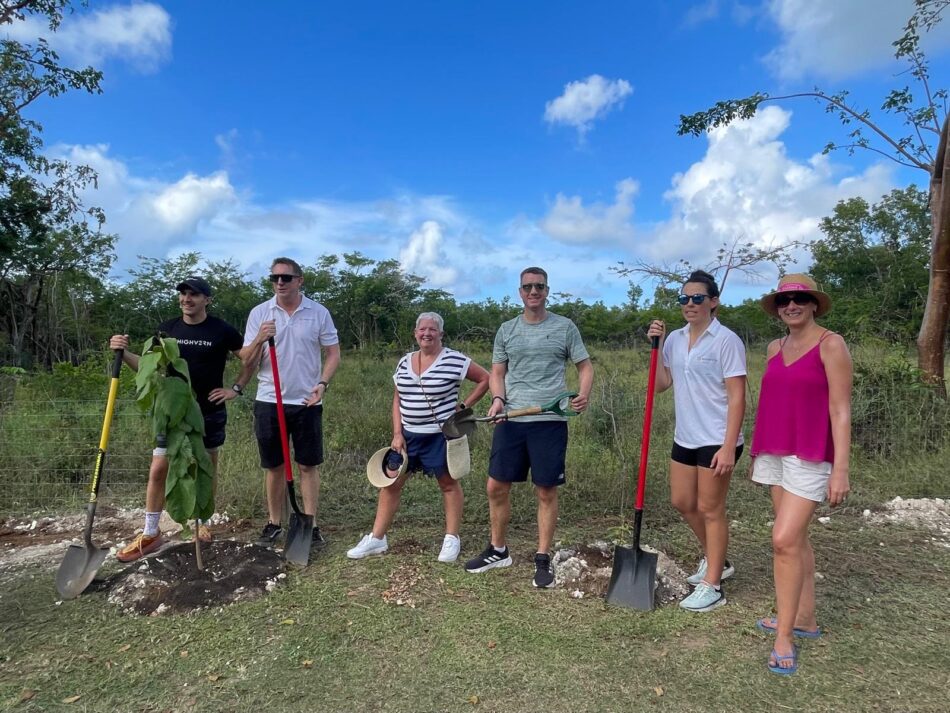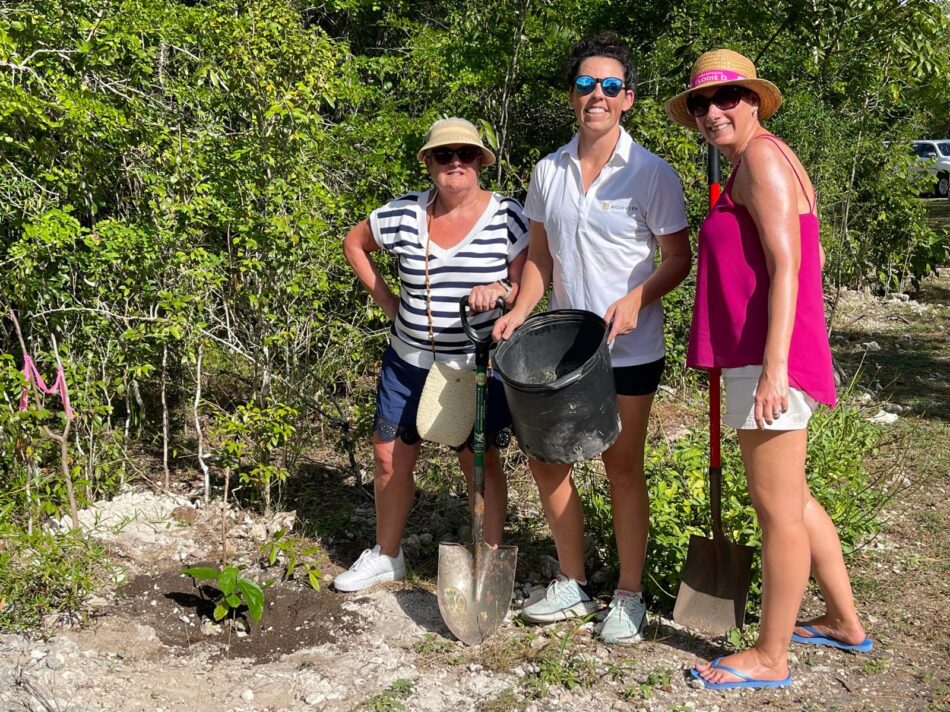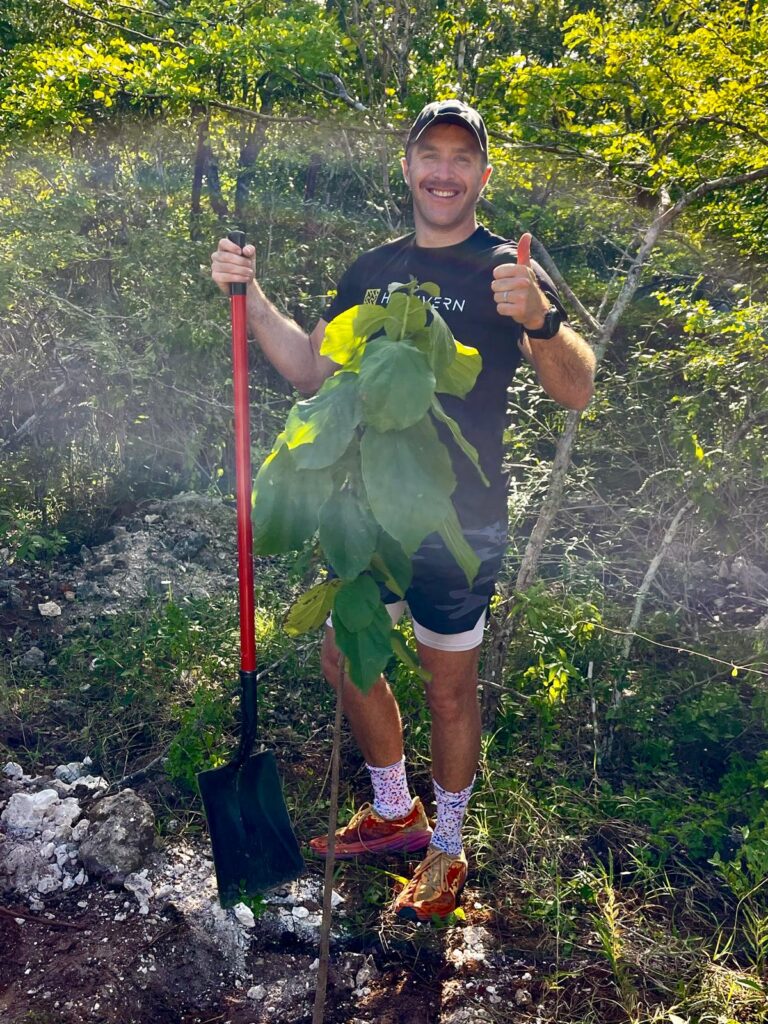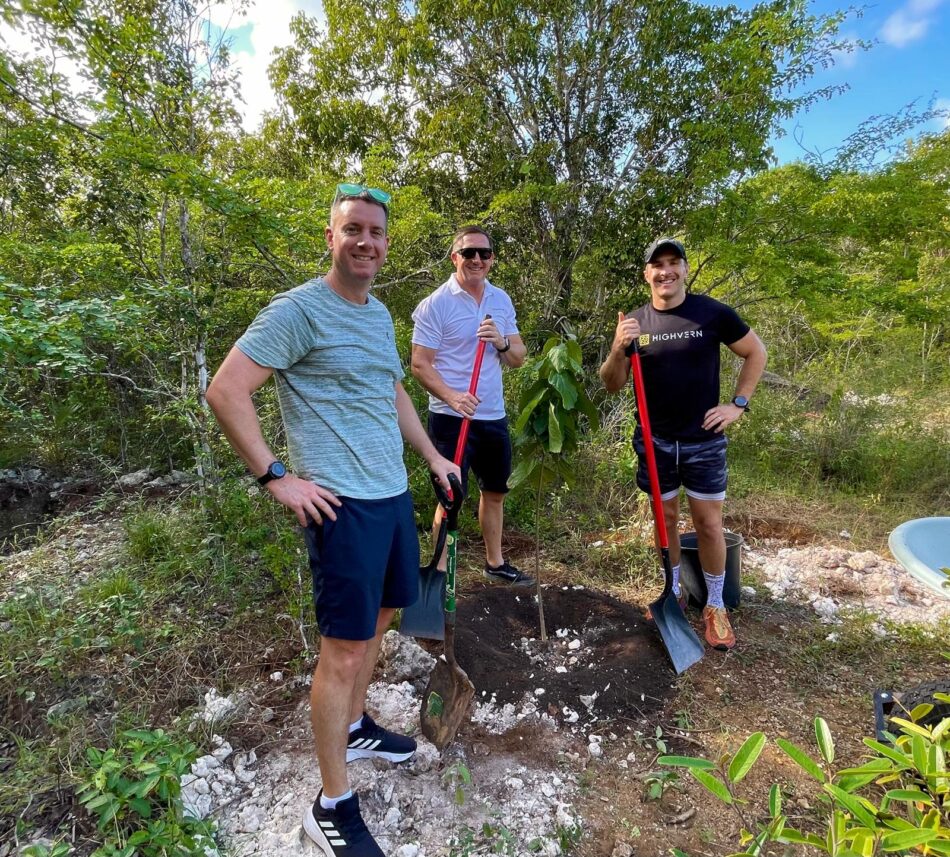HIGHVERN Cayman Commences Tree Planting Initiative to Offset Carbon Emissions

30 January 2025 — In a committed effort to support local environmental conservation and mitigate carbon emissions, HIGHVERN’s Cayman team recently embarked on a significant tree planting initiative at the southern entrance to the Mastic Trail. The team successfully planted the first 10 of 52 trees, marking the beginning of their ambitious project to partially offset their 2024 carbon emissions by planting one tree for every week of the year.

This initiative is conducted in collaboration with the National Trust for the Cayman Islands as part of their
Invasives-to-Natives tree planting project. These native species are integral to restoring and replenishing the natural ecosystem of the area. Our unique flora and fauna are part of an intricate and interconnected web of life and replacing native tree species to this previously damaged region will restore that balance.

The larger Mastic Reserve, encompassing 840 acres, is a vital conservation area that preserves local
biodiversity and critical habitat and is a National Trust protected area. The Mastic Reserve was established in 1992 to protect the largest contiguous area of untouched, old-growth forest in Grand Cayman. Located in the rugged interior of central Grand Cayman, the Reserve is of international significance, representing some of the last remaining examples in the region of the Caribbean’s lowland, semi-deciduous dry forest, and is hometo a wide variety of animals and plants unique to the Cayman Islands.

Roger Priaulx, Country Head – Cayman Islands, HIGHVERN, said, “We are proud to support this initiative to preserve the natural beauty and biodiversity of the Cayman Islands. HIGHVERN is committed to social
responsibility and environmental stewardship, as demonstrated by our policy of granting employees time to participate in community support initiatives, including this environmental conservation effort.”
This unique ecosystem is home to a diverse array of wildlife, including the Cayman Islands’ native parrot, the West Indian Woodpecker, and the Caribbean Dove. These species, alongside butterflies, lizards, frogs, and other fauna, thrive in this undisturbed environment. On the trail, walkers get the chance to experience a fascinating exploration deep into Cayman’s wild interior, in an area where the woodland has been evolving undisturbed for the last two million years. The pathway is also of historical significance as it served as a major thoroughfare.

For more information about the National Trust’s Carbon Offset Programme or to make a donation to
preserve special places in nature, contact marketing@nationaltrust.org.ky
About the Blue Iguana Conservation Programme
The Blue Iguana Recovery Programme began in 1990 with only 30 dedicated Blue Iguanas and the primary goal to restore the wild population to 1,000 Blue Iguanas, encouraging viable population in the long-term. Having met its primary goal in 2018, the initiative formally transitioned to the Blue Iguana Conservation Programme in 2019 with a new focus of sustainably conserving the native species of Grand Cayman.
About the National Trust’s Environmental Programme
The National Trust for the Cayman Islands’ environmental programme was founded on the concept that the protection of native plants and animals is best achieved by protecting the natural areas in which they
depend.
About the National Trust Conservation Programme
The National Trust for the Cayman Islands’ conservation programme strives to protect Cayman’s native
species and the habitats in which they live, and includes the endemic Blue Iguana of Grand Cayman, the Sister Islands Rock Iguana and Cayman’s native bat species.
About the National Trust Historic Preservation Programme
The National Trust for the Cayman Islands introduced the launching of its Historic Preservation Fund at its Annual General Meeting in September 2021 for the purpose of inviting increased support of its continuing efforts to encourage the preservation and protection of historic homes and buildings for present and future generations of the Cayman Islands.





